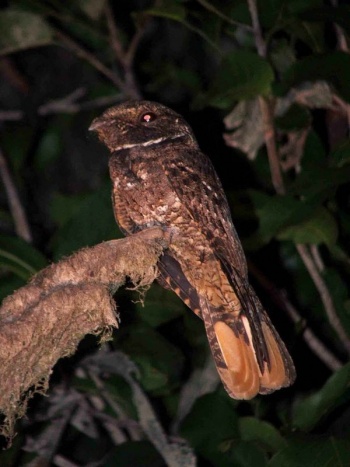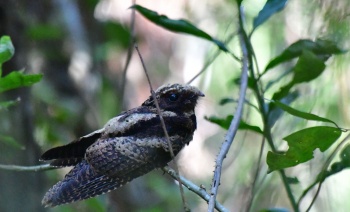- Antrostomus rufus
Includes St. Lucia Nightjar
Identification
25–30 cm (9¾-11¾ in)
- Rufescent-brown upperparts with broad blackish streaks
Distribution
Central and South America
Central America: found in Nicaragua, Costa Rica, Panama
Caribbean (West Indies), Lesser Antilles, Trinidad
South America: Colombia, Venezuela, Guyana, Suriname, Ecuador, Bolivia, Brazil, Paraguay, Argentina
Taxonomy
It was formerly placed in the genus Caprimulgus.
Subspecies
Five subspecies are recognized[1]:
- A. r. rufus:
- S Venezuela to the Guianas and n-central Brazil
- A. r. rutilus:
- A. r. saltarius:
- North West Argentina and south-eastern Bolivia
- A. r. otiosus:
- A. r. minimus:
- South East Costa Rica and Panama to Colombia and Venezuela; Coiba Island
A field guide proposed that A. r. otiosus would be better seen as a full species, St. Lucia Nightjar.
Habitat
A range of forest types, including rainforest, gallery forest, second-growth forest and open woodland.
Behaviour
Diet
They forage for insects either by hawking or fly-catching from a perch.
References
- Clements, J. F., T. S. Schulenberg, M. J. Iliff, D. Roberson, T. A. Fredericks, B. L. Sullivan, and C. L. Wood. 2018. The eBird/Clements checklist of birds of the world: v2018. Downloaded from http://www.birds.cornell.edu/clementschecklist/download/
- [http://www.birdforum.net/showthread.php?p=1931402 Birdforum thread discussing the proposal to place this species in genus Antrostomus
- Handbook of the Birds of the World Alive (retrieved October 2018)
Recommended Citation
- BirdForum Opus contributors. (2025) Rufous Nightjar. In: BirdForum, the forum for wild birds and birding. Retrieved 11 May 2025 from https://www.birdforum.net/opus/Rufous_Nightjar





